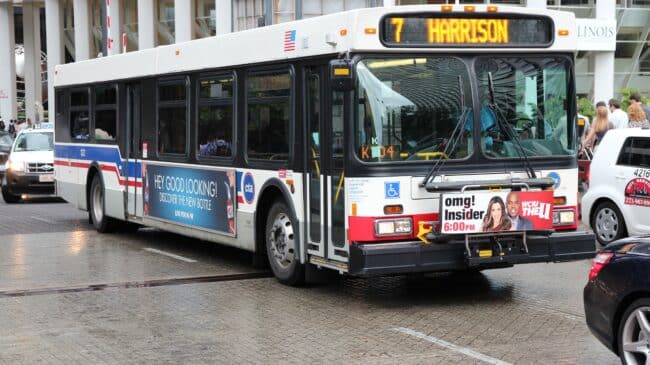The COVID-19 pandemic led to numerous major changes for transit agencies. Transit ridership is expected to recover to only 80% of its pre-COVID levels. A greater share of current riders is transit-dependent, and they do not have easy access to an automobile. Due in part to enhanced cleaning provisions and increased wages, agency expenses are higher than pre-COVID while farebox revenues are lower.
While some agencies lobby for continued federal bailouts, Republicans who control the U.S. House of Representatives in 2023–2024 do not appear to be planning to provide any supplemental funding to transit agencies.
Many transit agency boards don’t seem to recognize the severity of the problem. Some transit officials seem to be hoping, despite evidence to the contrary, that transit ridership will return to pre-COVID levels and that new funding sources will materialize. But COVID wasn’t the start of transit’s ridership problems; it just accelerated the decline.
Passenger numbers were declining before COVID, as agencies were adding too many rail lines and bus routes that lacked sufficient ridership. Additionally, board mismanagement and micromanagement caused many competent leaders to leave for other job sectors.
Rather than shuffling the transit deckchairs while the agency sinks from an iceberg of lower ridership, poor leadership, and political interference, agency leaders should make five immediate changes recommended in this brief.
In total, the five policy recommendations serve as a precursor to transitioning to a 21st-century transit agency. However, that transition will take several years and require additional changes outline in the related policy brief, “Five actions transit agencies should take in the next two years.”
Meanwhile, many transit agencies continue to hemorrhage riders and may encounter bigger economic problems in the next few years unless they take the following five actions immediately.
- Fully Fund Bus Service for Transit-Dependent Riders
- Charge Choice Riders the Full Cost for Service
- Replace Low Ridership Bus Routes with Paratransit
- Contract Out Service.
- Make Greater Use of Intelligent Transportation Systems
Transit ridership between 2023 and 2043 figures to be much lower than over the past 20 years. The COVID-19 pandemic was the biggest factor in ridership declines, but ridership has been declining nationwide even as some transit systems expanded rail lines.
In the long term, U.S. transit agencies need to make a series of changes that will reform their boards, contract out service, and better serve riders.
In the short term, fully funding bus service, charging choice riders the full cost of using transit, replacing buses with paratransit vehicles, contracting out service, and making greater use of ITS services are five changes that transit agencies can implement today.
Full policy brief: Five actions transit agencies should take immediately
Full policy brief: Five actions transit agencies should take in the next two years

